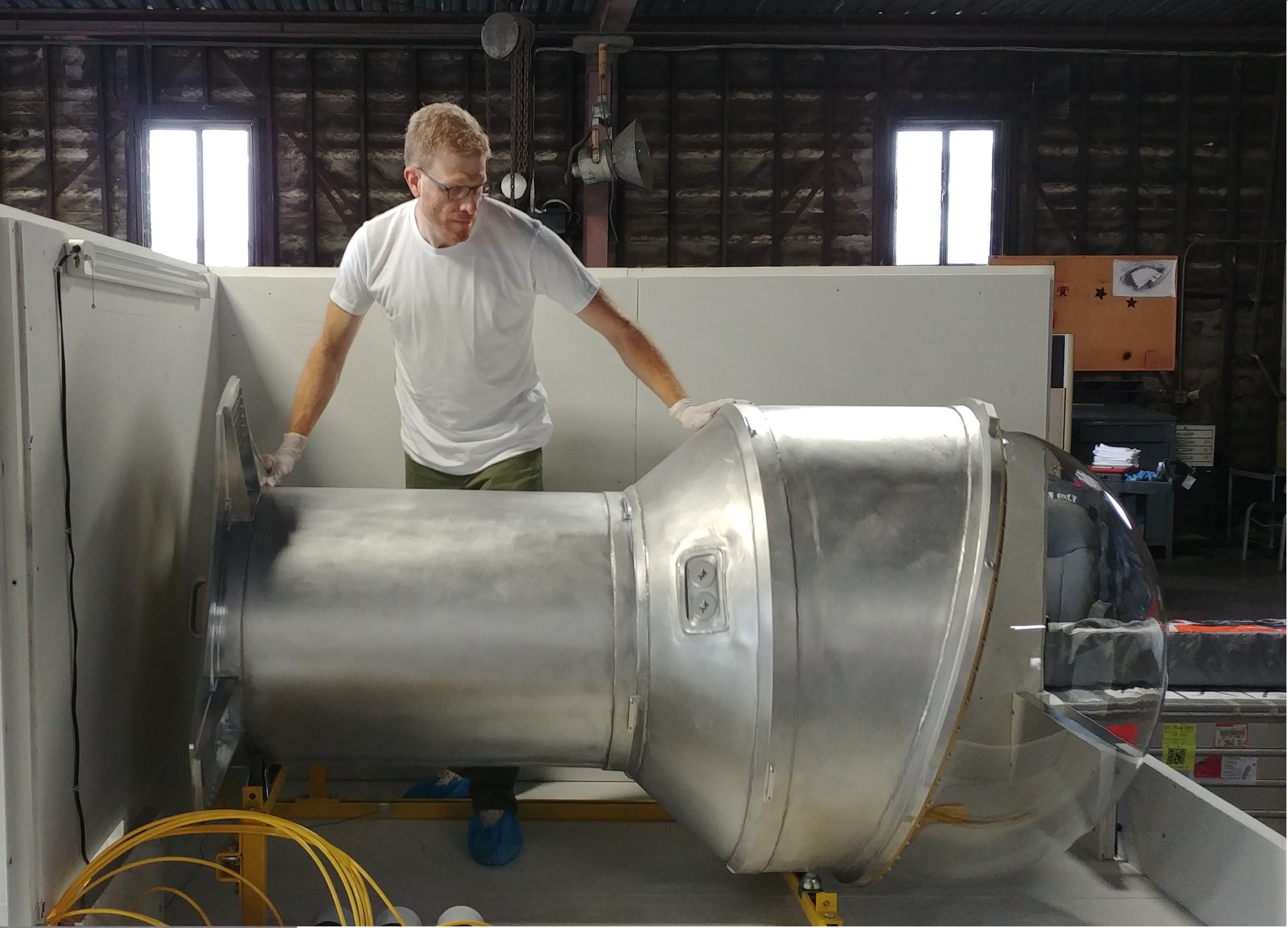Innovative Single-Person Spacecraft Design Passes Leak Test (Exclusive)

A spacecraft designed to eventually replace many spacewalking astronaut activities passed two key pressure tests in September, representatives from the company building the spacecraft told Space.com in an exclusive interview.
The spacecraft concept from Maryland-based Genesis Engineering Solutions is just big enough for one person; an astronaut would float inside the spacecraft for several hours and use robotic arms to manipulate equipment. Propulsive thrusters would allow the spacecraft to nestle close to a target, similar to NASA's Manned Maneuvering Unit jetpack that was briefly tested on astronaut spacesuits in the 1980s.
Instead of using a bulky spacesuit to do repairs on NASA's future Lunar Orbital Platform-Gateway space station, for example, the Genesis spacecraft operator could use the robotic arms while remaining in relative comfort inside of an enclosed cockpit. [Take a Look Inside Lockheed Martin's Proposed Lunar 'Gateway Habitat for Astronauts]
But long before it flies in space, the Genesis spacecraft must pass several key tests on the ground.
One of them is ensuring that the spacecraft can hold pressure. Genesis engineers performed the tests in early September at the facility of their manufacturing partner, AMRO Fabricating Corp., in the greater Los Angeles area (South El Monte). AMRO is also manufacturing panels for NASA's and Lockheed Martin's human-rated Orion spacecraft, which is supposed to bring astronauts to the moon in the 2020s.
The first Genesis spacecraft test showed that the crew cabin could hold pressure even when subjected to 1.5 times the expected operating pressure. The second test showed that the spacecraft had minimal leaks from its joints; eventually, project manager Brand Griffin told Space.com, the goal is to have no leaks at all.
"We passed the overall pressure test, and we passed the leak test, and what we're trying to do as a test philosophy is to look at all those things we can test on the ground to save money," Griffin said.
Breaking space news, the latest updates on rocket launches, skywatching events and more!
In February, Genesis announced that its spacecraft successfully passed an underwater "fit" test in which scuba-diving volunteers swam into the spacecraft while it was immersed in a pool. Volunteers of different heights and weights attempted to get inside and operate the controls. This was done to demonstrate that the spacecraft can fit a standard range of human body types.
Later this year, Genesis plans a ground-based propulsion-thruster test. While most of the spacecraft's components are easily available commercially, these thrusters needed to be custom-made in house and will require certification, Brand said. Next will come tests of the robotic manipulator system, which will be done in partnership with SRI (formerly the Stanford Research Institute.) SRI is known for creating robotics so sensitive that they can be used for defusing bombs, Brand said.
The spacecraft concept from Genesis Engineering Solutions draws from decades of development and past ideas going back to at least the 1950s. While the company hasn't disclosed a flight date yet for its spacecraft, it is hoping to port the craft onto a rocket for a test while the International Space Station is still active. (Space station funding from NASA currently goes until 2025.)
One possible partner is Sierra Nevada, whose Dream Chaser spacecraft is contracted to take on six NASA space station cargo missions by the end of 2024. Genesis would piggyback on the same Atlas V rocket carrying Sierra Nevada, for deployment in a different direction than Dream Chaser's trajectory. Genesis and Sierra Nevada have a "memorandum of understanding," and discussions are ongoing, Griffin said.
Even if the Genesis spacecraft flies on another rocket, Griffin says the spacecraft is designed to endure the launch loads from just about any rocket that travels to the space station. However, the key is for the spacecraft to never make it all the way to the orbiting complex itself.
"The space station is like a gated community. There are all these requirements you have to meet to get in, and they don't like things flying around," he explained. "We would separate before they even deliver the cargo to the space station and do it [our tests] where we're not in the air traffic of [the] space station."
Follow us @Spacedotcom, Facebook and Google+. Original article on Space.com.

Elizabeth Howell (she/her), Ph.D., was a staff writer in the spaceflight channel between 2022 and 2024 specializing in Canadian space news. She was contributing writer for Space.com for 10 years from 2012 to 2024. Elizabeth's reporting includes multiple exclusives with the White House, leading world coverage about a lost-and-found space tomato on the International Space Station, witnessing five human spaceflight launches on two continents, flying parabolic, working inside a spacesuit, and participating in a simulated Mars mission. Her latest book, "Why Am I Taller?" (ECW Press, 2022) is co-written with astronaut Dave Williams.


